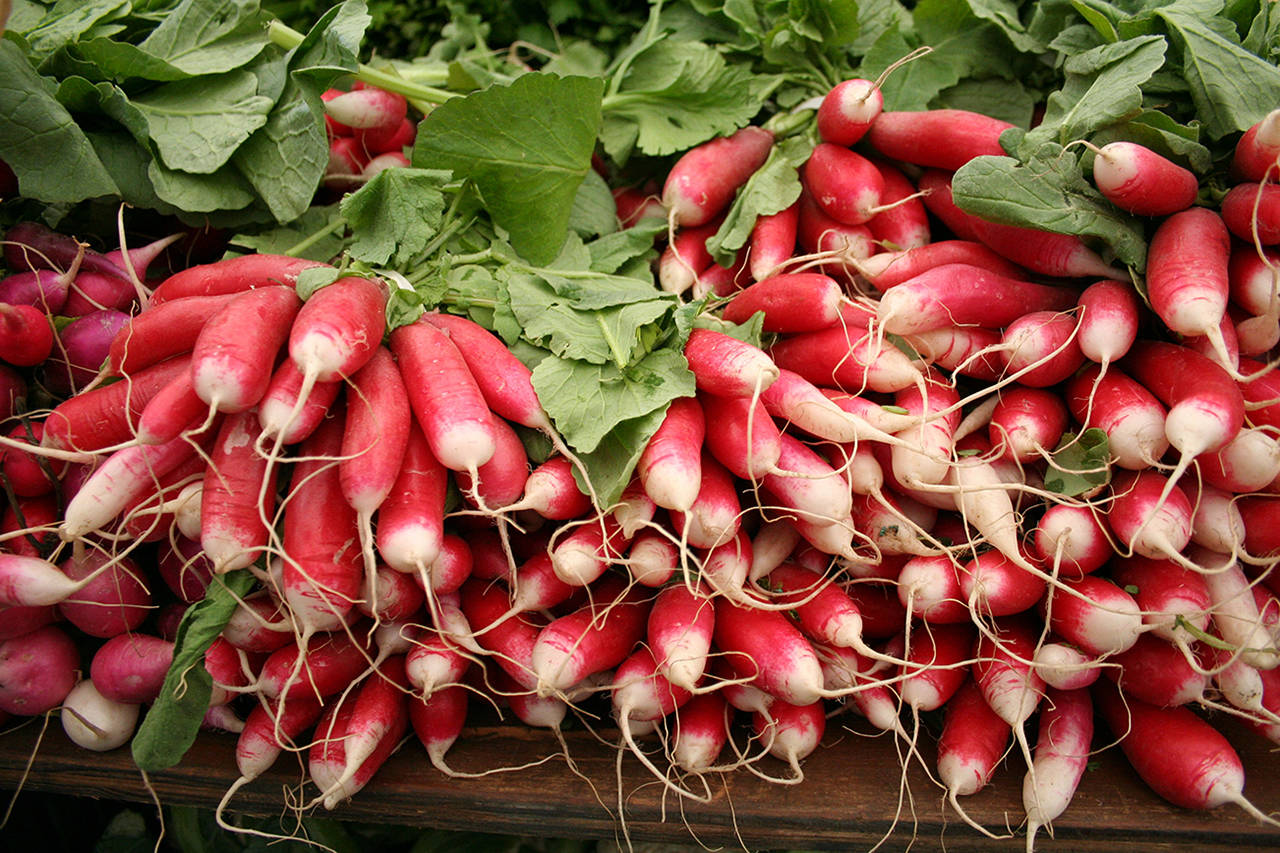By Kim Woodford
WSU Master Gardener
Feeling that chill in the air? It’s not autumn for me without certain things happening. First, I need to harvest a pumpkin. Second, I need to crunch my feet in fallen maple leaves. Third, I need to see “The Fantasticks,” a musical production with tunes including “Plant a Radish.”
My Master Gardener Guru, who is showing up more frequently without having been summoned, is singing:
Plant a radish.
Get a radish.
Never any doubt.
That’s why I love vegetables;
You know what you’re about!
Plant a turnip.
Get a turnip.
Maybe you’ll get two.
That’s why I love vegetables;
You know that they’ll come through!
They’re dependable!
My Guru is dancing around, doing a kind of King Tut routine. All of this brought on by that chill in the air?
Interestingly enough, I’m not the only one who needs to feel that chill. In the plant world, it’s known as “vernalization.”
Vernalization describes a plant going dormant in sufficiently cold temperatures to prepare for the following year. Biennial flowers and vegetables require this cold treatment to flower. The required temperatures and lengths of chilling depend on the plant species and variety. (My Guru shivers with arms crossed and teeth chattering dramatically.) This is one reason we need to choose plant varieties that are suited to our climate for the best results — and the healthiest plants.
As you can see, plants are more complicated than the song implies, especially biennials. “Dependable,” as the song promises? My Guru’s head shakes no. So, let’s take a quick look at these plants existing dubiously between annuals and perennials.
Biennials are the sneakiest of all plants. These are flowering plants with a two-year biological cycle. Biennial plants, like hollyhocks, foxgloves, carrots, and kale produce only vegetative growth (stems, leaves, and roots) during their first year, then produce flowers and seeds after vernalization over the winter.
Growth begins with a rosette that forms with a short stem and hangs in there through the winter months. During the second season (year two), the plant forms flowers, fruit and seeds. My Guru loves this word: the plant “bolts” following this second season — many will reseed and then expire. Of course, in the case of biennial vegetables, such as beets, carrots, chard, leeks and onions, we usually harvest them in the first year and rarely see the flowers.
Garlic is planted in the fall, in advance of the following season’s growth, because it requires this vernalization under winter temperatures. Watch your step: If temperatures are not low enough for a sufficient period of time, the garlic will not form bulbs, and they definitely will not come through as the song promises.
Bulbs — not considered biennials — such as tulips, hyacinths, crocus and daffodils also need to be exposed to cold winter temperatures to flower, and they may not flower if grown in warmer regions or if the winter is unusually warm. It is possible to induce some bulbs to flower at other times of year by storing them in the refrigerator for several months to imitate a winter chilling period. This is known as “forcing” the bulbs.
Now that we understand why plants need vernalization, maybe we will look more favorably on cold winter temperatures. We’ll know that they will soon be bringing us better springtime flower displays and more abundant fruit crops. Now we know what they’re about!
Kim Woodford, WSU Master Gardener Class of 2016, gardens in Westport. To learn more about the WSU Master Gardener Program of Grays Harbor and Pacific Counties, visit PNWMG.org.



